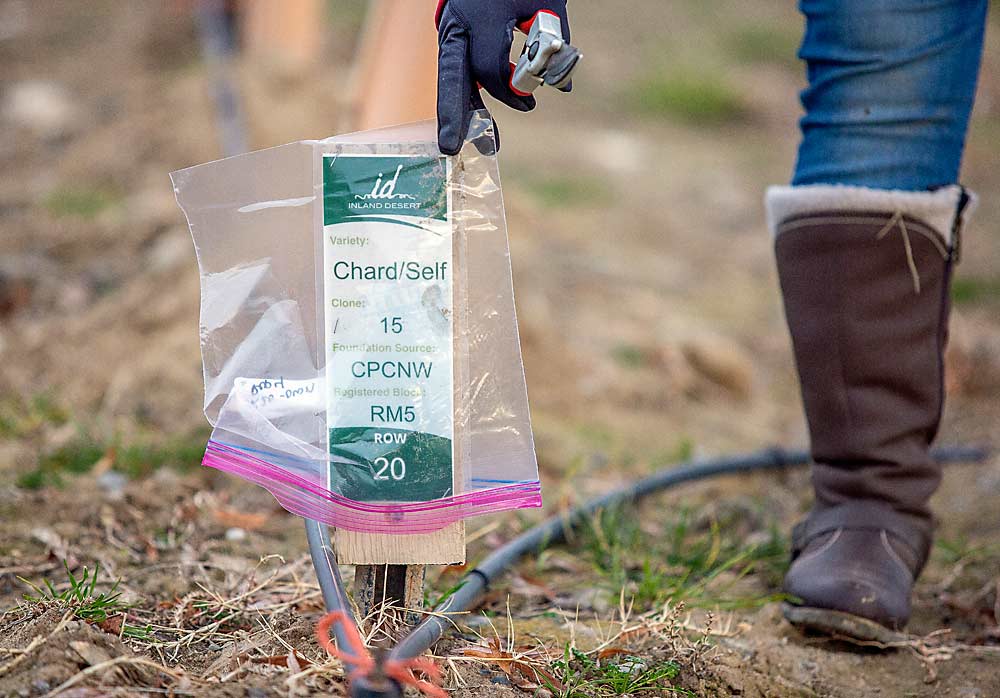
Washington wine grape growers, who for so long enjoyed the luxury of own-rooted vines, are switching to rootstocks that ward off disease and pests, such as the phylloxera recently discovered in the region.
To inform that transition, Inland Desert Nursery in Benton City has begun work on a trial that will compare the performance of five rootstocks.
The setup of the trial is funded by a one-time $25,000 Western Sustainable Agriculture Research and Education grant, and Kevin Judkins, owner and CEO of Inland Desert, wants people to check it out.
“We see this as Washington’s trial, not Inland Desert’s,” Judkins said as he outlined the project for the Washington State Grape Society in November. He also plans to share details at WineVit, the annual meeting of the Washington Winegrowers Association in February in Kennewick.
The 1.2-acre trial, planted in 2021 in a block just downhill from Inland Desert’s office, will measure cold hardiness, fruit quality and other characteristics on five replications of Chardonnay 15 clones grafted onto five rootstocks — 1103 Paulsen, 101-14, 3309, Schwarzmann and SO4 — plus an own-rooted/self-rooted control. It also features one row of Cabernet Sauvignon on seven rootstocks, plus an own-rooted control. Like many commercial vineyards in the region, the block happens to have phylloxera pressure nearby, which only “adds value” to the trial, Judkins said.
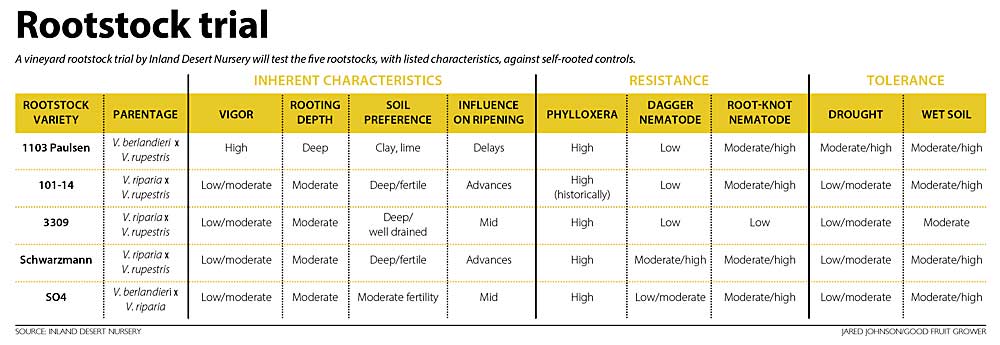
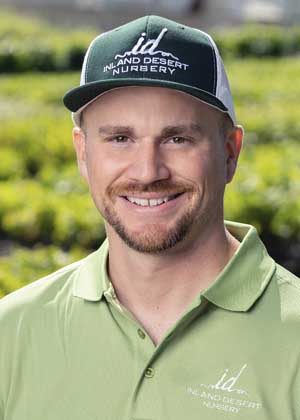
Ultimately, the results should help inform growers, as well as the nursery owner, as they choose rootstocks for their new plantings. Judkins considers his viticulture team skilled at bench grafting, as they serve growers in other regions where rootstocks are commonplace, but less confident in making rootstock recommendations for Washington.
“We’re … being very transparent and honest that we don’t know a lot yet,” Judkins said.
Inland Desert is not waiting for the results to act to keep up with future demand. The nursery has 20 acres of certified rootstock mother vines and intends to ramp up commercial production of several rootstocks. That includes the 1103 Paulsen, one of the more requested rootstocks. It’s resistant to phylloxera and root-knot nematode, and is tolerant of dry and wet soil conditions, though it delays ripening and is suited to warm sites.
This project is not the Washington industry’s first rootstock exploration. From 2007–2009, WSU’s Markus Keller evaluated five rootstocks at the university’s trial blocks near Prosser. His conclusion: They all did fine. All five rootstocks — Teleki 5C, 140 Ruggeri, 1103 Paulsen, 3309 and 101 CU — performed well against own roots, with only minor differences that could be overcome through tweaking irrigation management.
Keller, a Washington State University viticulturist, showed that rootstocks’ intrinsic vigor may not matter as much in Eastern Washington, where growers can use deficit irrigation to control vigor. But there is plenty to learn about how to match rootstock to variety and to site. The world has 6,000 named varieties of grapes. Nobody can test every single scion-rootstock combination on their own.
“I think they’re all going to work,” Keller said.
Rootstocks offer tools to overcome a variety of site conditions, such as drought, pH, salinity and pest pressure, said Michelle Moyer, a WSU viticulture extension specialist collaborating with Judkins. This trial is just a step in answering those questions.
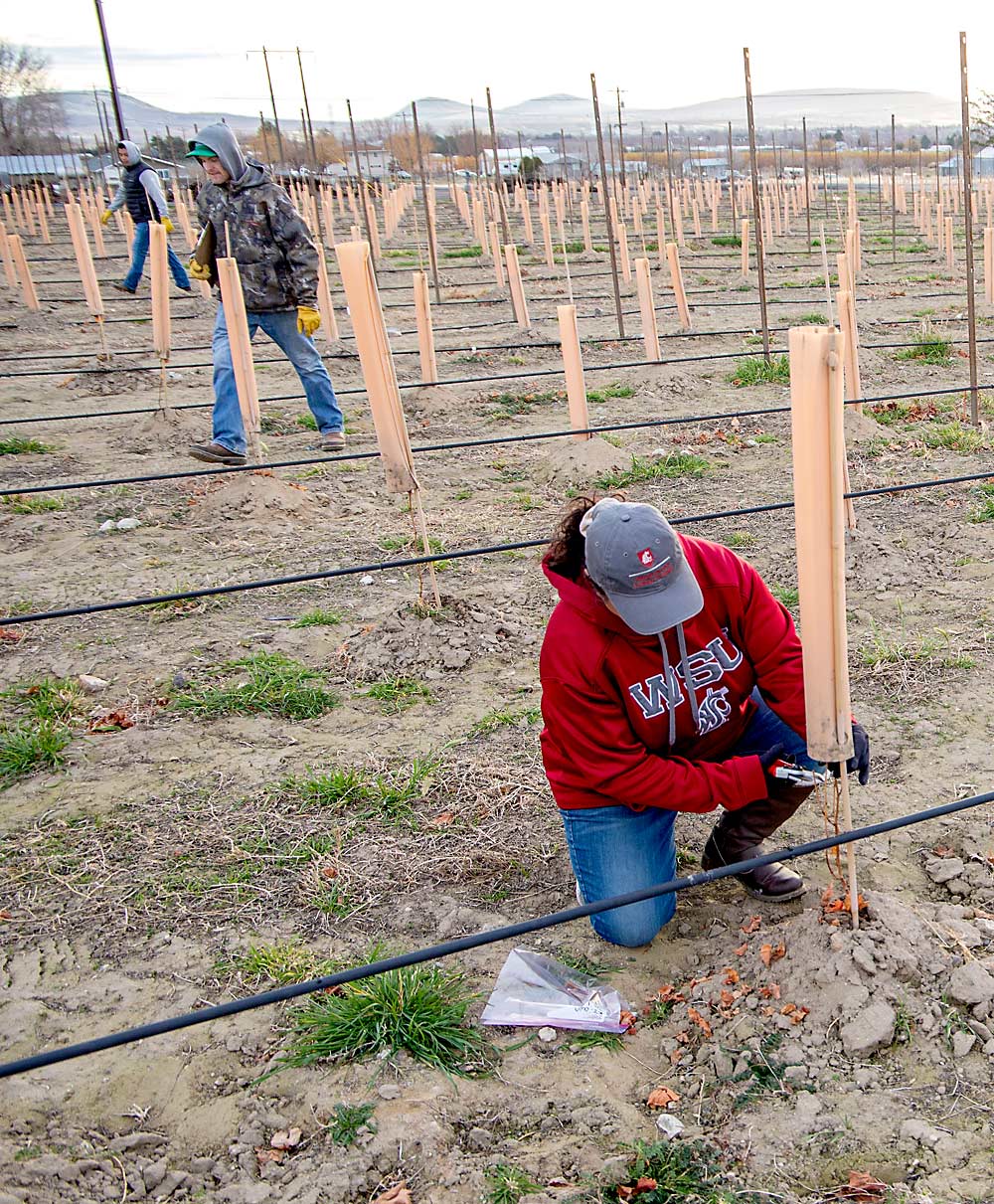
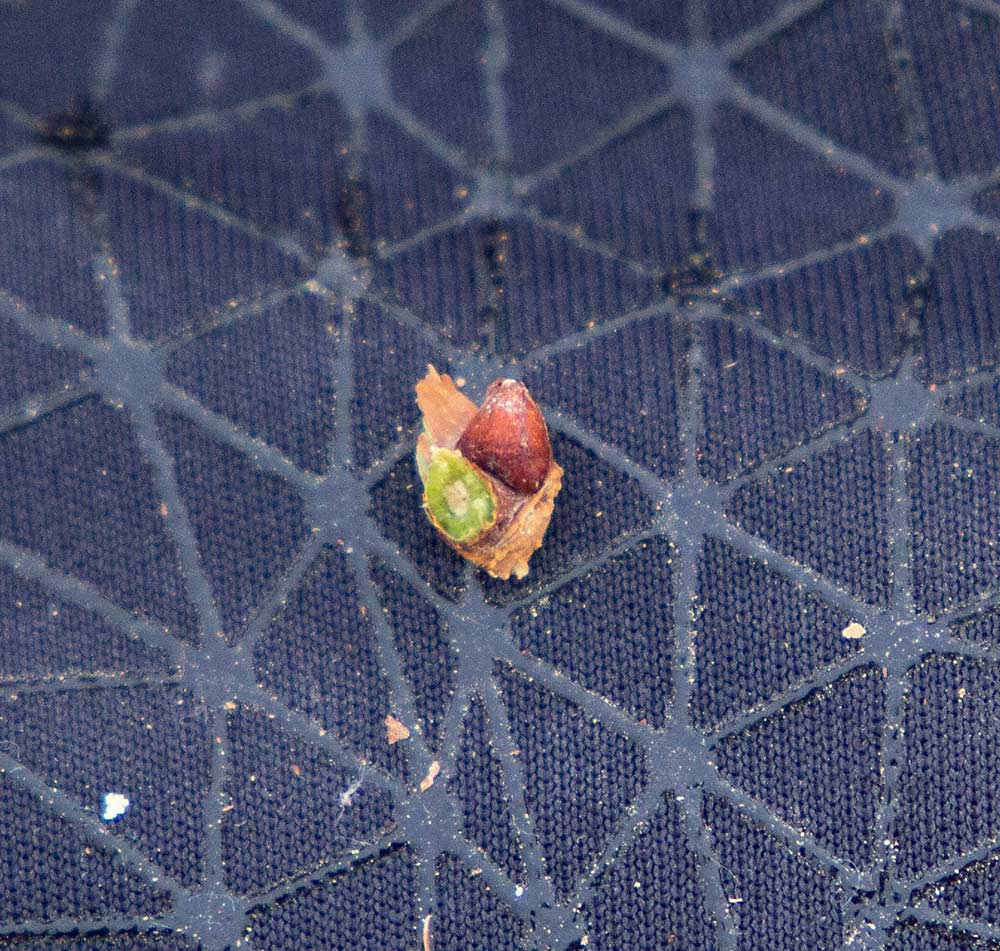
“It’s designed to provide some hands-on experience in the art and science of establishing grafted vineyards in Washington’s climate,” Moyer said. She also has a 10-year rootstock trial underway, funded by the Washington State Wine Commission, looking at performance against Northern root-knot nematode, which can pose challenges in replant sites.
Moyer helped Judkins select the trial rootstocks, a combination of some well-known and some not-so-well-known in Washington, for their ability to root and graft well, shorter vegetative cycles and drought tolerance.
Judkins encourages other growers to visit the block and intends to host field days as well.
Though the grant is for three years, he plans to continue monitoring the trial block for 10 years or more. Over time, he plans to add more rootstocks to the mix, beyond the original five. Eventually, he expects the self-rooted vines to begin to struggle, while the grafted vines hold up better.
“What we’re most excited about is that if any of the five grafted combinations maybe stands out as doing the best, and that’s something that definitely will take all of our eyes to really come to a conclusion on,” he said.
—by Ross Courtney

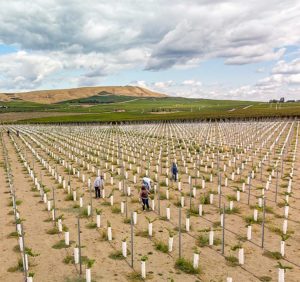
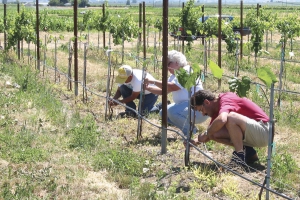





Leave A Comment